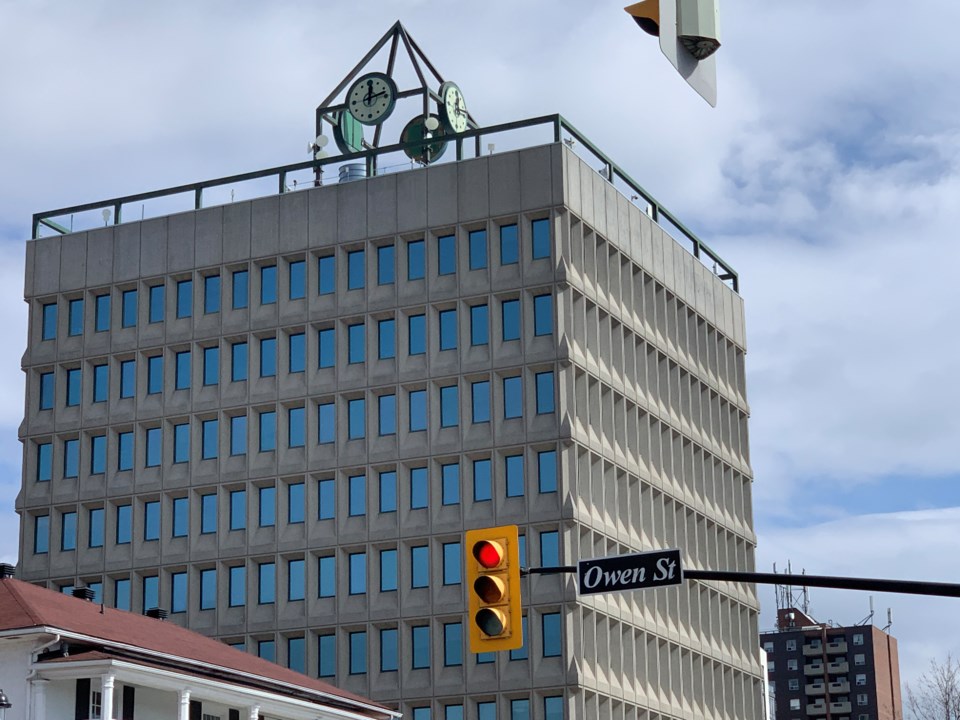Committing $18.6 million this year to advance infrastructure servicing on employment land in south-Barrie — to attract business and create new jobs — was approved by city councillors this week.
“We never really invest in the creation of employment and I truly believe that is a great way to quality of life, creating jobs for people,” Coun. Robert Thomson said Monday night. “I’m fully aware of the risk because we don’t build, we zone and we service and then we cross our fingers and hope we’ve done our homework.”
Final approval of this motion will be considered by city council at its April 26 meeting.
This private land is located north of Harvie Road and west of Highway 400. Infrastructure required includes the construction of a five-lane Bryne Drive, including storm sewer, sidewalks, streetlights, water mains and sanitary sewers.
Approximately 65 to 70 per cent of the funding would come from development charges, which are fees charged to recover growth-related capital expenditures from new developers.
Mayor Jeff Lehman said the remainder need not be a burden to city taxpayers.
“Let’s consider we have new gas tax dollars — just announced and committed for capital works in the city,” he said. “The federal government has doubled the gas tax and we have to spend that in 2021, so we are adding a net, new $9 million as of a few weeks ago to our capital plan anyway.
“I can’t think of a better way to spend it than trying to bring industrial employment and office employment to the city of Barrie," the mayor added.
The motion councillors passed Monday — to advance the infrastructure servicing by four years to start in 2021 — calls for $7.9 million in funding this year, $513,000 next year, $2 million in 2023, $4.1 million in 2024, and $4.1 million the following year.
But it also says the funding course should be changed from the tax capital reserve and development charge reserves to debentures, which is how the city borrows money.
“I’m not entirely convinced this is something we need to advance. I’m still open to doing this eventually,” said Coun. Keenan Aylwin, who also said he was concerned with the level of development services reserves.
Councillors also endorsed employment land north of Salem Road, east and west of Veterans Drive. The estimated local servicing cost is $5 million, but these are local servicing costs and will be paid by the developer. Development can proceed with existing water and sanitary infrastructure, although traffic signal improvements are needed on the west leg of the existing Commerce Park and Veterans Drive intersection.
The estimated 2021 infrastructure cost is $150,000 and would be funded equally from the tax capital reserve, the water capital reserve and the wastewater capital reserve.
Councillors also endorsed employment land north of Big Bay Point Road. Water and sanitary mains are in place, there are no immediate additional capital infrastructure investment needed, according to staff, so development can go ahead in the area as soon as local servicing work is complete.
“It seemed that these two scenarios were very evidently the most cost-efficient and got a significant amount of land on line the soonest, because this amounts to about 80 hectares (or 197.6 acres) and only will cost $150,000,” Coun. Gary Harvey said.
Aylwin also pointed out that employment land south of Harvie Road and west of the 400 is in the capital budget for 2022-24, for another 64 acres.
“With these three scenarios, we’re really setting ourselves up for success and being a competitive city, while also respecting taxpayer dollars by not taking on too much of a debt burden or having to defer other capital projects as a result,” he said.
“The world is shifting to more warehousing, more mixed manufacturing and distribution. That means bigger parcels (of land are needed),” Lehman said.
Staff are also to report back to Barrie councillors with proposed framework, criteria and options for utilizing the city’s reinvestment reserves to a develop an additional program to the Community Improvement Plan (CIP), for as much as $2 million, to provide incentives for strategic economic development on employment lands that includes grants and other financial incentives permitted under the CIP framework, to advance local servicing costs to be incurred within the next five years for lands identified in the Barrie employment land strategy.
Councillors also received and approved in principle that strategy, which includes scenarios with the greatest potential for accelerating the availability of serviced, shovel-ready larger parcels of employment land to the marketplace.
Stephannie Schlichter, the city’s director of economic and creative development, says the strategy focuses on large, vacant employment tracts of land — 39 acres plus — in a contiguous format (touching along boundaries) in key employment areas.
“We looked at the servicing elements that could put something shovel-ready in three to five years,” she said.
Last September, council directed staff to explore fiscal tools and strategies to increase the city’s competitiveness in attracting business and investment to employment land in Barrie and to report back with an analysis, recommendations and associated fiscal implications.
To meet the Barrie’s employment targets of 150,000 jobs by 2051, or nearly one job for every two residents, and a wider growth management vision, it is important the city ensures there is available employment land ranging in size for a variety of commercial and industrial uses.



